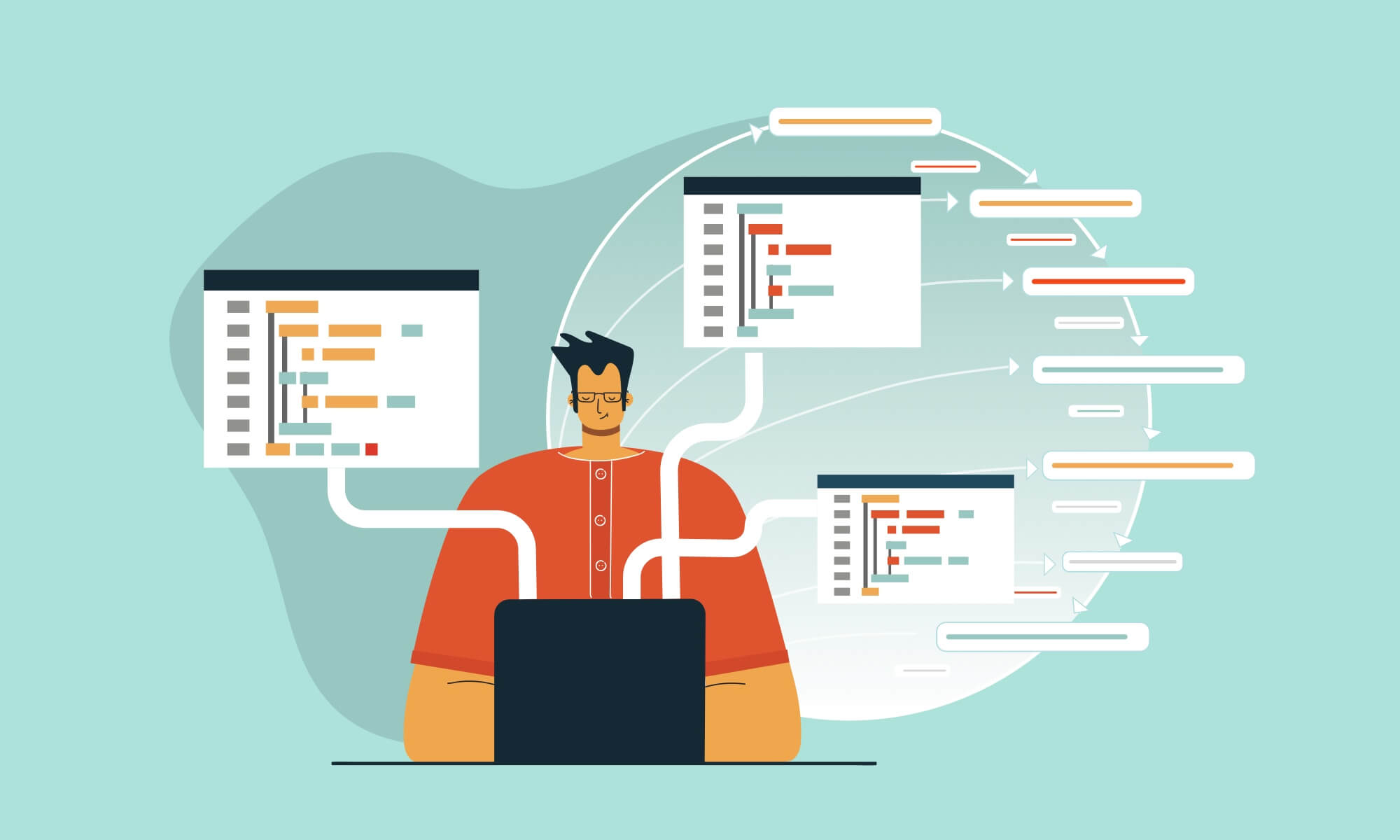Agile Developer
Browse topics
The role of developers in an Agile environment is essentially different. They have additional responsibilities that Agile software development requires which go beyond simply writing code.
Sometimes it is quite usual that developers can easily move into an Agile project, sometimes – not. This is actually not so simple; some developers may have a hard time making that transition. Some developers do not want to take the additional responsibilities, while some of them find Agile a source of inspiration.
In this post, we describe what an Agile developer does and how to make the transition to the Agile methodology smoother.

What Is an Agile Developer?
The role of an Agile developer is not always so clear and developers may have difficulties making the transition to Agile. In the Waterfall environment, developers can be fairly isolated from the rest of the world and simply write code. In the true Agile reality, this is not possible.
Agile developers are focused on sustainable development, not heroics. And adopting sustainable development practices requires discipline. Project leaders should believe that the notion that quality is more important than scope or schedule. This is often the hardest part of adopting agile.
Agile developers get the freedom and accountability to develop software sustainably, keeping a great relationship with the business. In return, the business gets the opportunity to take a higher-quality product to market.
A couple of words about the Agile philosophy
Agile developers admit that the world around us constantly changes. Therefore the software they create also needs to change.
The key difference compared to other development methods is to be as responsive as possible. Agile development is much closer to the way people solve problems, that is, iteratively. They fix a problem, decide how to solve it, try it out and improve their approach based on the feedback until the task is complete. This is the core of Agile software development.
Agile teams need to get into the habit of splitting work into small chunks (stories) of complete functionality and finishing every story before proceeding to the next. Every single story needs to add some feature to the product.
Agile teams should closely work with the customer, deploy early to enable amendments, prioritize customer requirements regularly, and be highly collaborative.
How to adapt
Some developers need to closely work with testers, requirements analysts, and also the customer whereas some may be used to working on their own.
When moving from the traditional development approach, one of the biggest changes developers have to make is letting go of the idea that individuals own pieces of code.
What should be changed is the idea that a developer works on a feature in isolation for several weeks. They must be ready to work much more closely with clients to understand their requirements on an ongoing basis.
What are the additional Agile developer’s role responsibilities?
The role of an Agile developer typically includes the following areas:
- Project management. Agile developers take responsibility for estimating, planning and managing all tasks and report on progress.
- Software quality. The Agile developer is also responsible for the quality of the software he/she produces. The team takes responsibility for the quality of the work they produce instead of turning over some code to a separate and independent group for testing.
- Teamwork. This includes collaboration with all other team members with the aim to take shared responsibility for the overall efforts.
- Understanding user needs. This is about interacting with users as necessary to clarify requirements.
What Makes a Good Agile Software Developer?
Agile developers are responsible for deliverables’ quality
Good developers in the Agile environment do not just develop to spec. They ask questions when things do not look quite right, make suggestions to the PO and the business analyst, review acceptance criteria and test their deliverable before handing it over to QA.
Agile developers own their deliverables through the entire Agile process
Defects may happen any time. When Agile developers have them, they do not get defensive and blame poor requirements. They collaborate with the entire team to get it right. Defects can be caused by different things from missed requirements to bugs during the code review, and so on. Agile team members do not worry about the causes; they take ownership and get busy making it right.
Agile developers understand the Definition of Done
Developers may sometimes move on to another task, without completing the previous one, planning to go back later and finish the last little thing. However, this does not work for an Agile team.
Often, this is one of the hardest adjustments developers need to make. Professional Agile developers understand the team’s Definition of Done and do not let the little things linger. They bring their work to full completion before moving on.
Agile developers believe in teamwork
Agile teams succeed or fail as teams. And developers really need to buy into the concept of the team, and the success or failure of the team as a team. This may mean helping out in the areas developers traditionally do not get involved. A good Agile developer understands this and can do what it takes to make the team successful sprint after sprint.
Agile developers are willing to learn and like mentoring
Cross-training, learning, and mentoring are great aspects of a highly functioning Agile team. The best developers strive to share their knowledge with others and have a passion for learning from others. This is critical for any Agile team where the most productive teams are cross-functional.

4 Steps to Becoming an Awesome Agile Developer
1. Design thinking for the start
Agile practices help people to get new ideas and experiences for improving their daily work in application development with team collaboration.
These practices will help you to better understand what you are doing and why you are doing it. You will also get a better understanding of how to measure the outcomes. A design approach will assist you to start discovery easier.
2. Using a predictive approach
Agile software development projects usually require focusing on adapting to rapidly changing app development environments. However, this adaptive approach usually makes it harder for developers to understand and report what they will do in the next sprint.
The predictive approach pays more attention to analyzing known risks and detailed planning of future sprints.
3. Improving code quality regularly
Apply continuous integration practices to improve your solution before deploying code into production. To adopt modern application frameworks, use automated tools to address complex continuous integration procedures. Automated continuous integration also enables Agile developers to improve their application development agility through learning and using open source tools and patterns.
4. Exploring communities
Being a part of the growing open source community, you will improve your professional skills as an Agile developer, and your actions will inspire other developers who want to learn Agile.
Conclusion
The essence of Agile software development is building a great development culture in your organization. Do not doubt to learn more about continuous integration, effective branching strategies, automated test techniques, and creating relationships with other parts of the business. Agile software development is a journey. And let this journey be satisfying for you!
